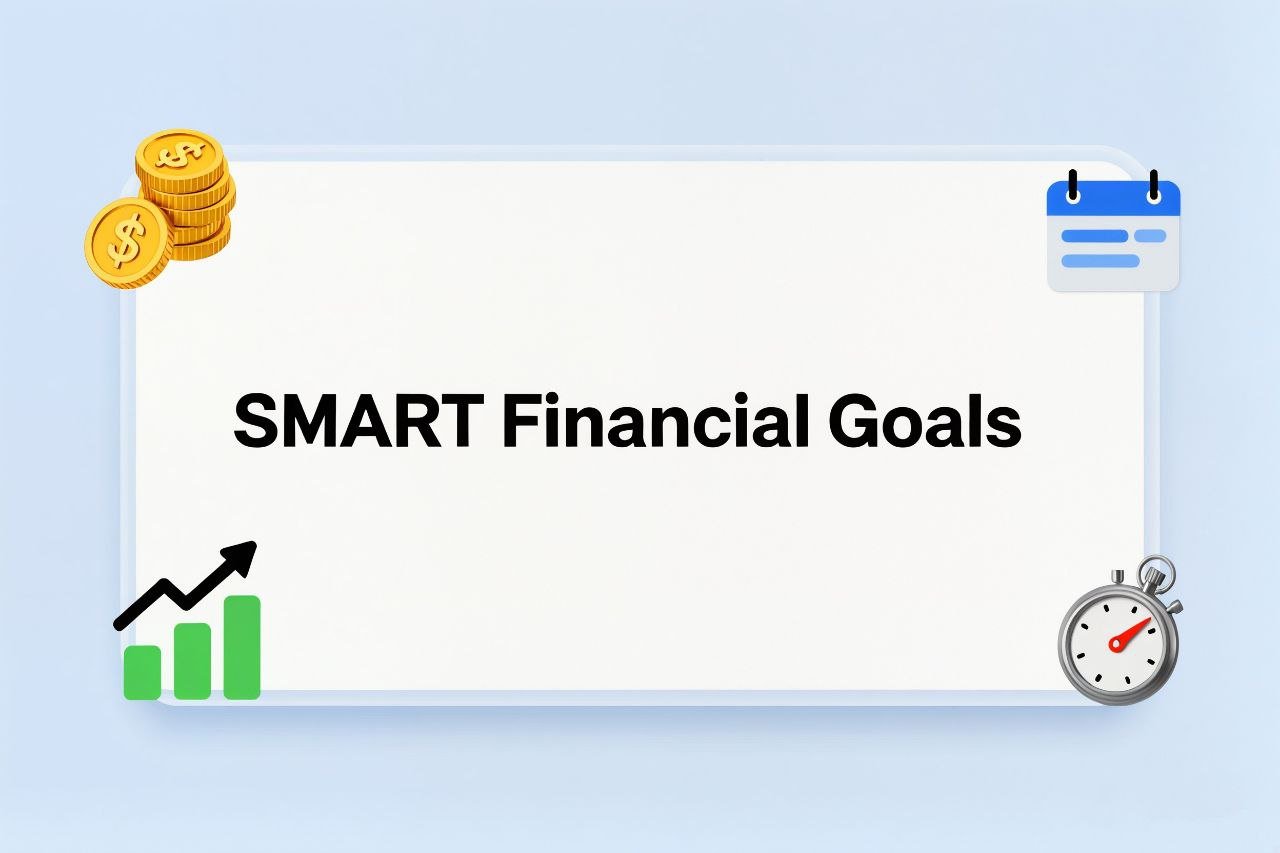Introduction
Managing money is one of the most important life skills, yet most people approach it without a clear strategy. They often say, “I want to save more money” or “I need to start investing”, but these statements are too vague and rarely lead to results. The difference between wishful thinking and real financial progress is having a well-defined plan. That’s where SMART goals come in.
SMART is an acronym for Specific, Measurable, Achievable, Relevant, and Time-bound. This framework has been used in business and productivity for decades, but it’s just as powerful in personal finance. By applying SMART principles, you can turn abstract financial desires into concrete, trackable steps that move you closer to your dreams.
Whether you’re building an emergency fund, saving for a down payment, or planning for retirement, using SMART goals provides clarity, accountability, and direction. Let’s break down how it works.
Why SMART Goals Matter in Personal Finance
Financial planning without goals is like driving without a map — you may move, but you don’t know where you’ll end up. SMART goals give you that map. They help you:
- Focus on priorities instead of distractions.
- Track progress and celebrate milestones.
- Stay motivated even when challenges appear.
- Break long-term dreams into small, actionable steps.
With this structure, you move from uncertainty to control, and from guessing to measurable progress.
S – Be Specific
Specific goals clearly define what you want to achieve. Instead of saying “I want to save money,” identify exactly how much and for what purpose.
✅ Example: “I will save $10,000 for a down payment on a house.”
This statement leaves no confusion. You know the amount, the purpose, and the end result. Being specific allows you to create an action plan instead of leaving things open-ended.
M – Make It Measurable
A goal must be trackable. If you can’t measure progress, you won’t know if you’re moving in the right direction. Adding numbers or metrics is the key.
✅ Example: “I will save $500 each month until I reach $5,000.”
Now you have a target and can measure progress every single month. A measurable goal lets you celebrate small wins and keeps your motivation alive.
A – Ensure It’s Achievable
While dreaming big is great, goals should still be realistic. If you aim too high without the resources to support it, you may end up discouraged. The achievable aspect ensures your goals fit your current situation.
✅ Example: If you earn $2,500 per month, saving $1,500 might be too aggressive. Instead, saving $400–$600 is more realistic.
SMART goals stretch you but don’t set you up for failure.
R – Keep It Relevant
A goal must align with your deeper values and life purpose. Money itself is not the end — it’s the tool that enables freedom, security, and opportunities.
✅ Example: “I’m saving to create a secure future for my family and to have the freedom to pursue passion projects without financial stress.”
This statement ties the financial goal to something meaningful. When challenges come, remembering the why behind your goal will keep you motivated.
T – Add a Time-Bound Deadline
A goal without a deadline is only a wish. Deadlines create urgency, discipline, and accountability.
✅ Example: “I will save $40,000 for a down payment by July 2030.”
The time frame allows you to work backward. For this example, you’ll know you must save about $8,000 per year, or roughly $667 per month. Having a clear timeline makes the goal actionable.
Putting It All Together: A Real-Life Example
Let’s take an emergency fund as a case study.
- Initial idea: “I want to have an emergency fund.”
- SMART version: “I will save $5,000 in a high-yield savings account to cover three to six months of living expenses. I will achieve this by saving $250 per month, starting this month, and finishing by January 2026. This is important because it gives me peace of mind and financial security in case of emergencies.”
Notice how the SMART version provides clarity, a timeline, and a strong reason behind the effort.
Extra Tips to Strengthen Your Financial Goals
- Track your progress: Use budgeting apps or spreadsheets to monitor savings and spending.
- Celebrate milestones: Reward yourself when you reach halfway or hit smaller savings goals.
- Stay flexible: Life changes. If income increases or expenses shift, adjust your plan without abandoning it.
- Be consistent: Even small contributions add up. Thanks to compound growth, consistency is more powerful than perfection.
- Review yearly: Revisit your financial goals annually to make sure they still align with your priorities.
The best time to start is now. Don’t wait for the “perfect moment” — it rarely comes. Begin with one goal, make it SMART, and build momentum over time. Remember, financial success is not about luck; it’s about consistent, disciplined action. Use SMART goals as your roadmap, and watch your financial future become brighter and more secure.
